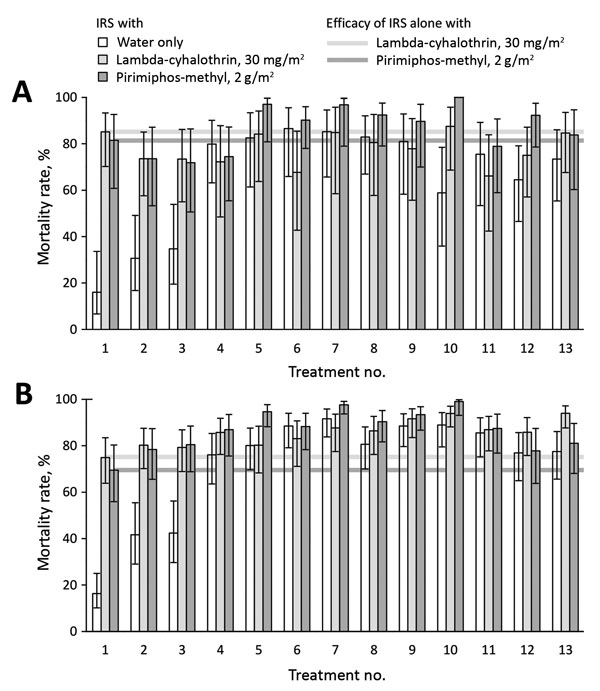Volume 23, Number 5—May 2017
Research
Control of Malaria Vector Mosquitoes by Insecticide-Treated Combinations of Window Screens and Eave Baffles
Figure 2

Figure 2. Effect of window screens and eave baffles treated with 13 combinations of insecticides and binding agents on malaria vector mosquito mortality rates inside experimental huts, Tanzania. A) Anopheles funestus. B) An. arabiensis. Huts were previously sprayed with 1 of 3 alternative indoor residual spraying regimens (Technical Appendix 1) and occupied by 2 volunteers sleeping under pyrethroid-treated, long-lasting insecticidal nets. IRS, indoor residual spraying. Error bars indicate 95 CIs. Estimated mean mortality rates and 95% CIs, as well as statistical contrasts between the most relevant treatment pairs, are indicated in Technical Appendix 2).
Page created: April 14, 2017
Page updated: April 14, 2017
Page reviewed: April 14, 2017
The conclusions, findings, and opinions expressed by authors contributing to this journal do not necessarily reflect the official position of the U.S. Department of Health and Human Services, the Public Health Service, the Centers for Disease Control and Prevention, or the authors' affiliated institutions. Use of trade names is for identification only and does not imply endorsement by any of the groups named above.